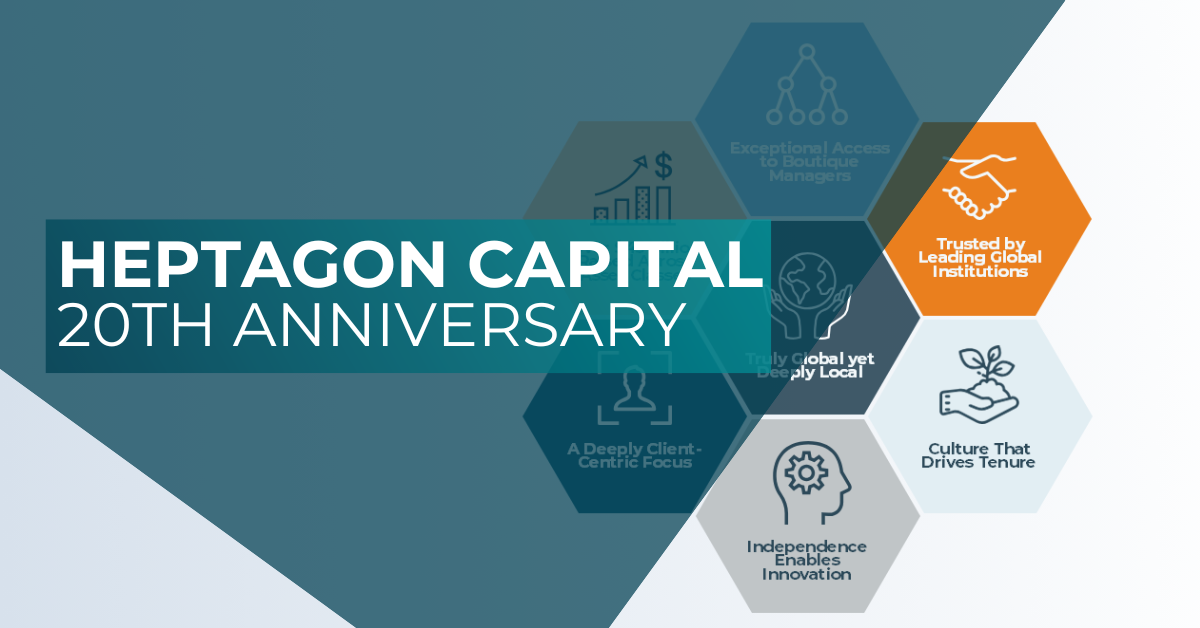
View From The Top: After the party
View from the very top: when the tides of liquidity go out, there will be consequences. 2022 is likely to be marked as the first time since the Great Financial Crisis where we see a broad tightening of monetary conditions. This will occur at the same time that the recovery boom of the past year will be replaced by a transition towards steadier growth. The ongoing coronavirus pandemic combined with heightened geopolitical risks add to uncertainty levels. Against this background, it seems hard to believe that the recent party that most pro-risk asset classes have enjoyed will continue. If it does, then it certainly won’t be with the same relative linearity witnessed over the past twelve months. Our expectation is for a possible near-term reset followed by a potential second half recovery, particularly should monetary conditions loosen once again. Throughout, our approach remains one of balance and diversification. Also consider raising cash to deploy in the event of market weakness.
Asset Allocation:
- Equities: 2021 marked the third consecutive year in which the global equity market has generated a double-digit return. A Dollar invested at the MSCI World’s March 2020 trough would now be worth over 100% more. Sure, earnings estimates have risen markedly over this period, but expectations (not to mention valuation levels) going into 2022 are now correspondingly higher. We also note how market breadth has narrowed substantially over this period, with a small number of (mega-cap tech) stocks driving an increasing percentage of relative outperformance. We continue to prefer equities over fixed income, but would not be surprised to see a near-term reset. A relatively less hawkish stance from the world’s major Central Banks could be a catalyst for resumed outperformance. Businesses with a quality bias should do better in a more mid-cycle period for the global economy, but our preference is to embrace a range of styles, balancing growth and value as well as quality and more cyclical. Own emerging market equities for the long-term too.
- Fixed Income/Credit: Treasury investors have endured their worst year in terms of real returns (once inflation is taken into account) in over four decades. We have said for some time that there is limited logic in owning negatively yielding debt – of which there is over $15tr currently, per Bloomberg – and this has been reflected in our low allocations to the space. The likely upward direction of travel for inflation remains an additional risk. Nonetheless, the case for mean reversion does have its merits, particularly should there be a shift in Central Bank policy. For now, stay on the sidelines.
- Alternative Assets: We reiterate our stance of increased allocations towards this space. These assets bring clear diversification benefits to portfolios as well as the further positive of collateral-backed cashflow generation (which can act as an inflation hedge). We advocate clear exposure to business models with strong balance sheets such as seniors’ housing or logistics REITS. Infrastructure assets should also continue to benefit from ongoing fiscal stimulus initiatives.
- Gold: Despite a poor performance over 2021 (the price of gold fell 3.4%), we retain conviction in an allocation to this asset class. We believe uncertainty generally benefits this asset class, which also brings markedly less volatility to portfolios than bitcoin. For indirect exposure, consider the relative valuation (especially versus US equities) of the listed miners.
- Currencies: A stronger US Dollar was the currency story of 2021. Further strength cannot be ruled out in the very near-term, especially if the Federal Reserve continues with a tightening bias. Beyond the mean reversion argument once again, a more balanced growth and inflation mix globally in 2022 may argue for Dollar weakness as the year evolves.
After the party comes the inevitable hangover. For some, this will have been an unfortunate reality after recent traditional end of year celebratory events. However, investors generally have relatively little familiarity with this phenomenon. Indeed, we have all been dancing while the music has continued to play (thanks Chuck – Prince, that is, the former CEO of Citigroup, notoriously credited with the turn of phrase). Since the end of the Great Financial Crisis, a raft of unconventional monetary policies has sustained the economy and lifted almost all asset prices. It is therefore going to be interesting to see what happens now that 2022 will see the withdrawal of the metaphorical punchbowl. For the first time in at least a decade, financial conditions look set to tangibly tighten. Whether we emerge from this development without consequences akin to a hangover remains to be seen.
To the extent that we are in the business of making predictions, it seems reasonable to assume currently that 2022 will be characterised by another year of above-trend growth, albeit one where its pace will be less vigorous than in 2021. The coming year might well be appropriately described as one that is mid-cycle: growth will decelerate. Correspondingly, the pace of earnings revisions may well slow, particularly as financial conditions tighten, or at least become less accommodative. What this implies is a year of higher rates and possibly lower P/E multiples for equities generally. Investors be prepared.
Thought of another way, 2022 may well be a year of transition: from recovery boom to steady growth, and from hyper-stimulative to more hawkish monetary policy. By way of major caveat, Omicron (or any future subsequent Greek-named mutation of the Coronavirus) may change this thesis. However, global capital markets – apart from a few notable areas such as travel and leisure – have generally taken the ever-unravelling pandemic in their stride. Even if the next year will see monetary policy tighten, its broad bias remains very loose, certainly by historic standards.
Under almost all possible scenarios for how the year may pan out, it seems hard to step away from the notion that investors remain in thrall of what Central Banks (and the Federal Reserve especially) say and do. If the projected path of interest rates for the world’s largest economy (the ‘dots plot’ shared by the members of the Federal Reserve’s Open Market Committee) is to be believed, then the concept of a ‘normal’ cycle no longer exists. Inflation and interest rates will both likely top-out before the end of 2023. Life as we knew it pre-GFC no longer applies.
Beyond the appearance of metaphorical swans of any colour – further pandemic-inspired dislocations and/or heightened geopolitical tensions being the most obvious currently – the biggest question with which investors will likely have to contend is the possibility of policy error from the Fed (and/or any of its major global brethren). In Central Banks we trust – even if fiscal stimulus has clearly helped mitigate catastrophe over the last two years – so be they damned should they commit an error.
Ask investors what they see as the largest possible tail risk for 2022 and hawkish Central Banks ranks as the number-one concern, per the latest monthly Fund Manager Survey from Bank of America Merrill Lynch. Perhaps the most important question then to consider is just what sort of error might the Fed et al make, and what would it mean for asset classes? The debate is generally phrased around the notion of the Fed being behind the curve, especially in the context of currently very low rates and ongoing asset purchases. Should they tighten too late, then yields might get out of control, but an overly pre-emptive move to tightening could risk hurting the economy. Further, the longer the Fed waits, the worse its dilemma may become.
What we do know is that inflation in the US is currently at its highest rate (6.8%) since 1982 and also that Jerome Powell’s recent messaging has suggested a tone of increasing hawkishness. Much of the fretting around inflation has been around its transitory versus permanent nature. Whereas we began 2021 in the former camp, our conviction over the past year has shifted towards the latter. Deglobalisation is inherently inflationary as are current labour market and demographic dynamics (put simply, supply and demand are unbalanced). The Fed therefore likely feels that it has to ‘do something’ – even if it may well end up being for the wrong reasons.
The fact that five-year inflation break-evens (i.e. the difference between the nominal yield on a fixed investment and the real yield on an inflation-linked investment) in the US have remained consistently below 3% can be viewed through one of two lenses. Bulls would assert that the market believes that the Federal Reserve is applying (and will continue to apply) the right degree of hawkishness in order to keep inflation under control. A less charitable view might be that the market is at risk of stumbling into an abrupt hangover after the party finishes. Put another way, the stability in break-evens could be indicative of investor complacency. Under this interpretation, a more aggressive tightening of rates is simply not being discounted at all.
What seems clear to us are two things. First, there is a certain perverse logic in withdrawing stimulus and de facto tightening just at a time when Omicron is adding to economic uncertainty. Next, it is generally hard to bring an inflation spike under control unless interest rates rise to a point where they are above the rate of inflation. Steeply negative real rates are likely to do very little actually to counter inflationary risks. Taking these two elements together, there is a scenario where the ongoing pandemic exacerbates existing supply chain bottlenecks and labour market constraints, driving inflation higher regardless of what Central Banks choose to do. In this context, the Fed’s current projection of 2.7% PCE inflation by the end of 2023 seems incongruous.
The investing landscape will likely be further complicated by the fact that globally we will likely see divergent monetary policy during 2022. While the Federal Reserve remains primus inter pares – where they lead, others tend to follow – the Bank of England (and the Norges Bank) have already hiked while the European Central Bank seems determined to hold off from tightening for as long as possible. Most notably, however, China’s Central Bank (the PBOC) is loosening policy at present, seeking to ward off a clear slowdown. To the extent that there is commonality, we see a scenario of Central Banks globally doing their hardest to prolong the lengthy and largely untested monetary experiment that began over a decade ago. Should the Fed become less hawkish, then longer duration assets of all hues would likely resume their outperformance.
2022 may therefore play out as a year of two parts: crudely, hangover followed by recovery, particularly in the event of realisation and subsequent rectification of possible policy error. After another year of equity outperformance (the MSCI World gained 20.1% in 2021 and has risen 103.4% since its March 2020 nadir), a short and sharp correction may be healthy thing, prompting a relative resetting of expectations. Buying the dip has remained a persistent – and generally rewarding – approach. We might nuance this observation by highlighting the risk of investing in areas of the market that are excessively influenced by liquidity, momentum and crowded trades. When the tide of liquidity goes out, those assets that have benefited most may underperform. Our counsel for the year ahead remains one of balance and diversification. Stay nimble in 2022.
Alex Gunz, Fund Manager, Heptagon Capital
Disclaimers
The document is provided for information purposes only and does not constitute investment advice or any recommendation to buy, or sell or otherwise transact in any investments. The document is not intended to be construed as investment research. The contents of this document are based upon sources of information which Heptagon Capital LLP believes to be reliable. However, except to the extent required by applicable law or regulations, no guarantee, warranty or representation (express or implied) is given as to the accuracy or completeness of this document or its contents and, Heptagon Capital LLP, its affiliate companies and its members, officers, employees, agents and advisors do not accept any liability or responsibility in respect of the information or any views expressed herein. Opinions expressed whether in general or in both on the performance of individual investments and in a wider economic context represent the views of the contributor at the time of preparation. Where this document provides forward-looking statements which are based on relevant reports, current opinions, expectations and projections, actual results could differ materially from those anticipated in such statements. All opinions and estimates included in the document are subject to change without notice and Heptagon Capital LLP is under no obligation to update or revise information contained in the document. Furthermore, Heptagon Capital LLP disclaims any liability for any loss, damage, costs or expenses (including direct, indirect, special and consequential) howsoever arising which any person may suffer or incur as a result of viewing or utilising any information included in this document.
The document is protected by copyright. The use of any trademarks and logos displayed in the document without Heptagon Capital LLP’s prior written consent is strictly prohibited. Information in the document must not be published or redistributed without Heptagon Capital LLP’s prior written consent.
Heptagon Capital LLP, 63 Brook Street, Mayfair, London W1K 4HS
tel +44 20 7070 1800
email [email protected]
Partnership No: OC307355 Registered in England and Wales Authorised & Regulated by the Financial Conduct Authority
Heptagon Capital Limited is licenced to conduct investment services by the Malta Financial Services Authority.



